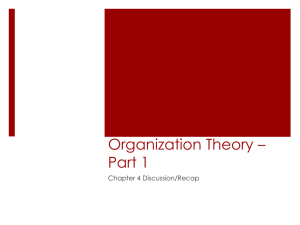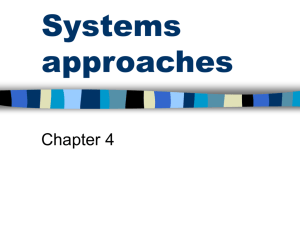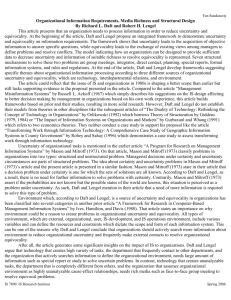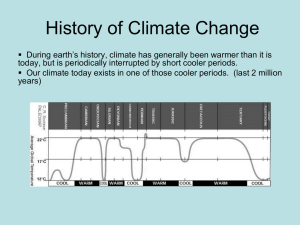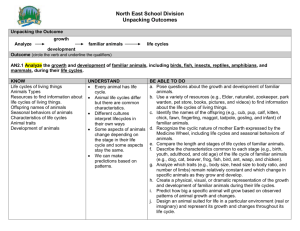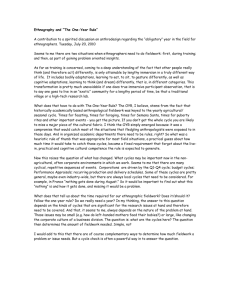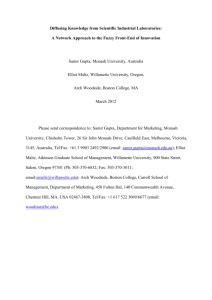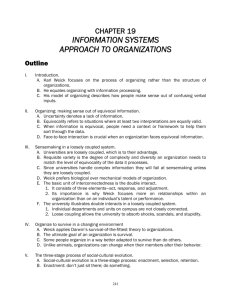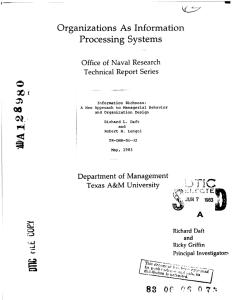Organizational Information Theory
advertisement
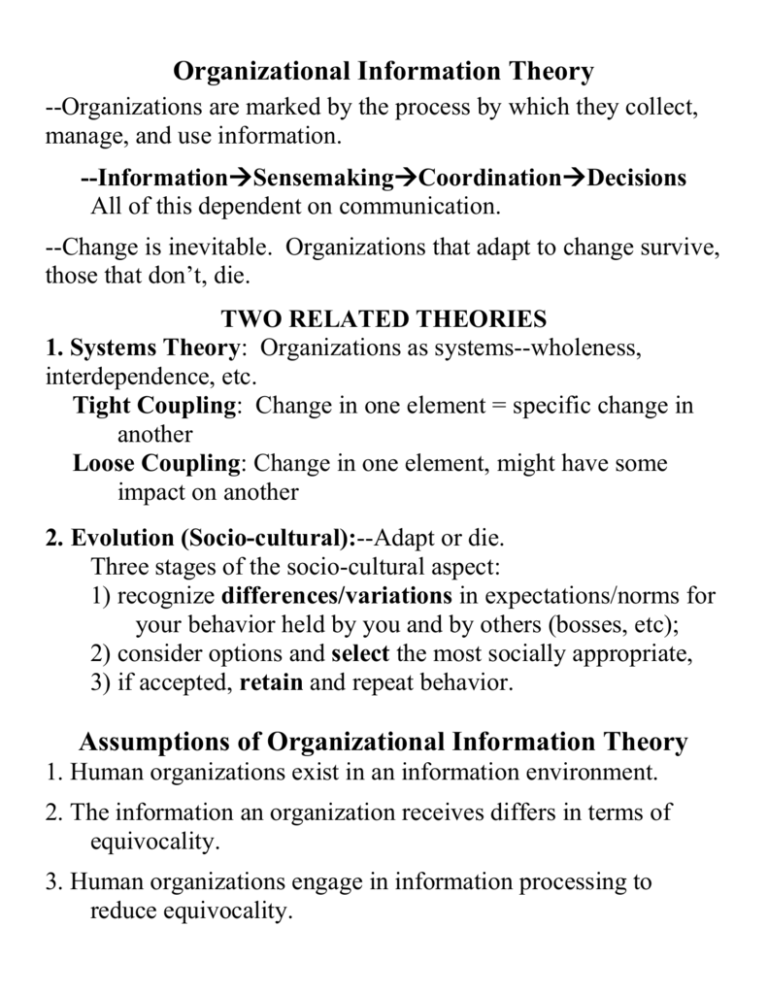
Organizational Information Theory --Organizations are marked by the process by which they collect, manage, and use information. --InformationSensemakingCoordinationDecisions All of this dependent on communication. --Change is inevitable. Organizations that adapt to change survive, those that don’t, die. TWO RELATED THEORIES 1. Systems Theory: Organizations as systems--wholeness, interdependence, etc. Tight Coupling: Change in one element = specific change in another Loose Coupling: Change in one element, might have some impact on another 2. Evolution (Socio-cultural):--Adapt or die. Three stages of the socio-cultural aspect: 1) recognize differences/variations in expectations/norms for your behavior held by you and by others (bosses, etc); 2) consider options and select the most socially appropriate, 3) if accepted, retain and repeat behavior. Assumptions of Organizational Information Theory 1. Human organizations exist in an information environment. 2. The information an organization receives differs in terms of equivocality. 3. Human organizations engage in information processing to reduce equivocality. Equivocality = the extent to which organizational messages are uncertain, ambiguous, and/or unpredictable. Information Environment = Availability of all stimuli: information. Two tasks organizations have: --interpret external information from information environment --coordinate the information to make it meaningful to members Information Equivocality: How do organizations reduce equivocality? --Organization must make sense out of equivocal information. --Departments, individuals, committees, etc. created to handle specific information --Need to find the right person(s) to make sense out of equivocal information--route the equivocal message to the person who can make sense of it. Requisite Variety: The more complex the information, the greater number of “interpreters” needed to insure sensemaking. Rules = guidelines an organization follows for handling equivocal messages/information. Examples of Typical Rules Duration--rule about how quickly Personnel--who deciphers Success--re-use what worked in the past Effort--rule to use the least amount of resource/effort Cycles = series of communication behaviors that serve to reduce equivocality (patterns, roles, norms, formal and informal structure/networks, hierarchy) Three Stages: An ActA ResponseAn Adjustment Double Interact Loops: the use of multiple cycles to reduce equivocality Principles of Equivocality (like Uncertainty Reduction) 1. An organization must analyze the relationship among the equivocality of information, the rules the organization has for removing equivocality, and the cycles of communication that should be used 2. If the organization has only a few rules that assist in reducing equivocality, a greater number of cycles will be needed. 3. The more cycles that are used to obtain additional information and make adjustments, the more equivocality is removed. Reducing Equivocality Enactment: making the effort to reduce equivocality--activating the sensemaking Selection: Application of the rules and cycles “Retroactive Sensemaking.” Application of the rules and cycles. Organizational reflection and self-analysis--make sense out of what happened. Retention: Collective memory allows people to meet goals --Catch 22
